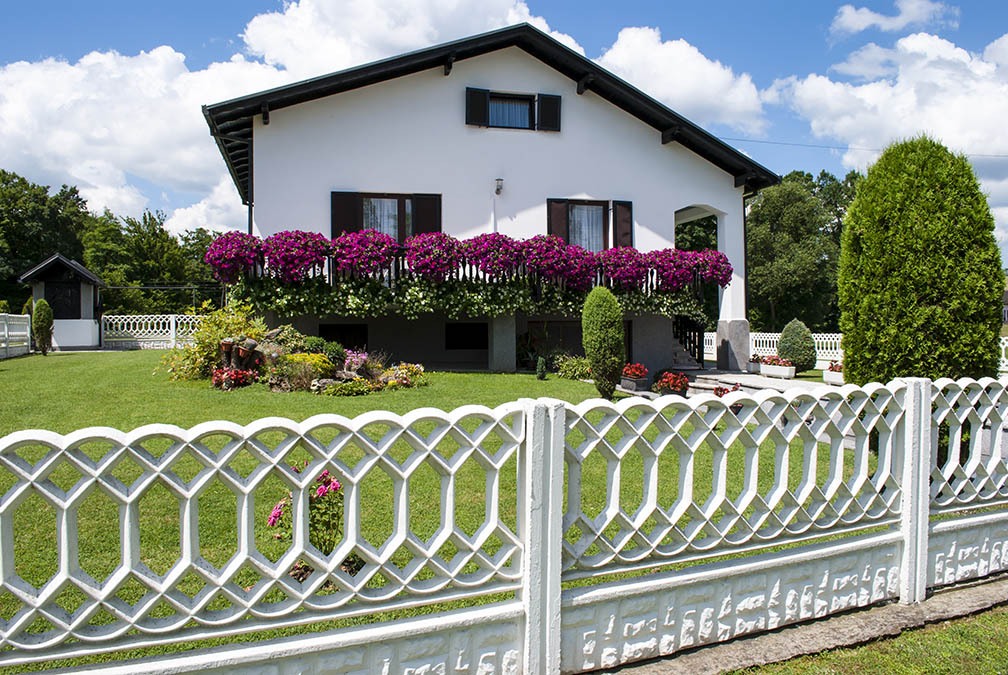Let’s Talk Fencing: How to Put a Fence Around Your Home Without Destroying Its Appeal
 Many homeowners consider a fence around their property for a variety of reasons, whether it’s to keep the dog in the yard or to maintain privacy. However, the wrong fence can entirely change the look of your property and make a beautiful yard a bit of an eyesore. If you’re trying to determine what kind of fence will work for your home, here are some tips before you start to dig in the dirt.
Many homeowners consider a fence around their property for a variety of reasons, whether it’s to keep the dog in the yard or to maintain privacy. However, the wrong fence can entirely change the look of your property and make a beautiful yard a bit of an eyesore. If you’re trying to determine what kind of fence will work for your home, here are some tips before you start to dig in the dirt.
What’s Your Fence For?
Before deciding what kind of material to use, it’s important to know what type of utility you want for your fence. While a stone fence may be elegant and offer a lot of privacy, it can also be quite expensive; on the other hand, a wooden fence may be more affordable but it can deteriorate over time. It’s entirely possible you have a material you’ve already decided upon, but ensure that it’s something that will live up to your expectations and have the functionality you’re looking for.
What’s Your Home’s Style?
An imposing stone fence may be the style that instantly draws you, but if you have a relatively unassuming home or a more whimsical style, it can be a bit much for what your home. Instead of basing your fence purchase around the budget you can afford and the style you like, ensure that it will complement the style of your home and the yards surrounding yours so there is no marked contrast between your fence and the rest of your property.
What’s The Neighborhood Vibe?
Most neighborhoods have a distinct style, so in order to get some ideas for what type of fence will work with your property, take a look around your local area. There will likely be homes that look similar to yours and they may be able to give you a good idea of what options you have when it comes to fencing. You’ll also want to take note of how particular fences look around the gardens and patios of other homes, as these are features you won’t want to obscure.
There are many fences available on the market that serve every purpose, but it’s important to be aware of what will work for your property so you can make a good aesthetic decision.

 From choosing a real estate agent to finding the right home, the process of getting a mortgage is rife with many different choices. If you’re investing down the road, it’s likely that you’ve heard about variable and fixed interest rates and are wondering about the differences between the two and how they can benefit you. While what will work best for you depends on your financial flexibility and market knowledge, here are some basics that will help you make a decision.
From choosing a real estate agent to finding the right home, the process of getting a mortgage is rife with many different choices. If you’re investing down the road, it’s likely that you’ve heard about variable and fixed interest rates and are wondering about the differences between the two and how they can benefit you. While what will work best for you depends on your financial flexibility and market knowledge, here are some basics that will help you make a decision. If you’ve recently put your home up for sale, one of the most exciting parts of the selling process is getting an offer. However, all is not said and done once you’ve received an offer, as you’ll probably want to negotiate a better price. If you’re wondering how you can counter without losing a potential buyer, here are some tips when the time comes to negotiate.
If you’ve recently put your home up for sale, one of the most exciting parts of the selling process is getting an offer. However, all is not said and done once you’ve received an offer, as you’ll probably want to negotiate a better price. If you’re wondering how you can counter without losing a potential buyer, here are some tips when the time comes to negotiate.